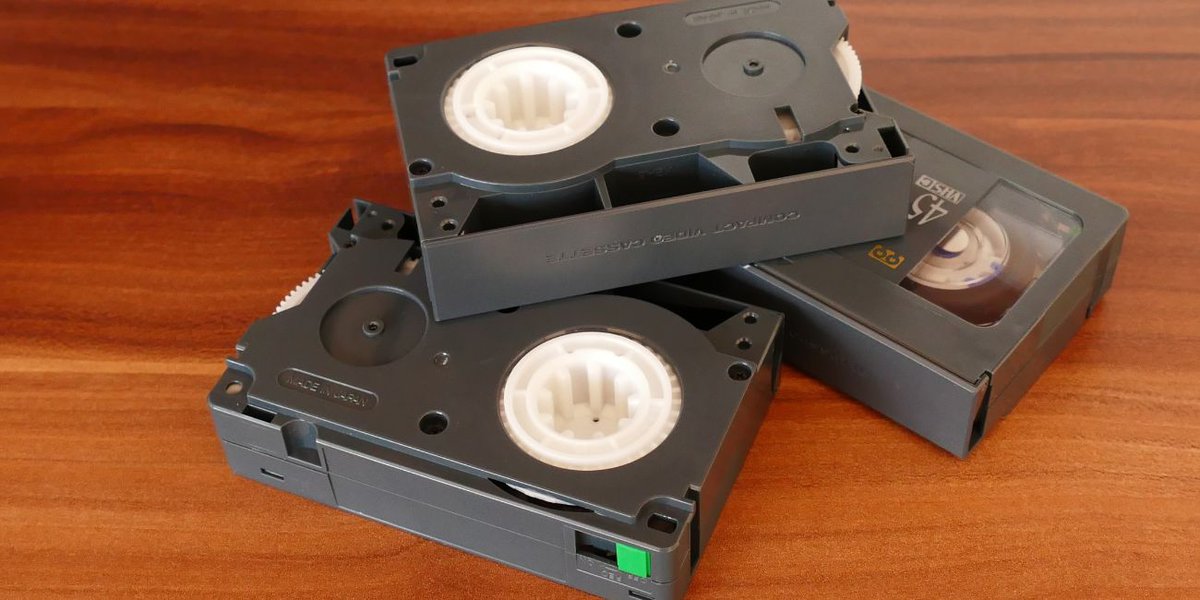VHS stands for Video Home System. It was a type of videotape format made for people to watch and record video at home. JVC, a Japanese company, introduced VHS in 1976. The goal was to make video playback simple and affordable for regular users.
The name “Video Home System” means video that works at home, without big equipment. Before VHS, people had to go to theaters or watch live TV. With VHS, they could record shows, rent movies, and save personal memories.
Who Invented VHS and Why?

The company behind VHS was JVC (Victor Company of Japan). Their engineers wanted a cheap and easy way to record and play videos in homes. In the early 1970s, video recording was mostly used by TV studios. JVC wanted to bring this to families around the world.
VHS was made to be open to other companies, too. This helped more people use it, and it grew fast. It became the standard for home video in many countries.
How VHS Worked?
VHS used a magnetic tape inside a plastic cassette. This tape stored analog video and sound. People inserted the cassette into a VCR (Video Cassette Recorder) to play or record.
A standard VHS tape could hold 2 to 6 hours of video. The tape moved over playback heads in the VCR, which turned the video into a signal for the TV.
This made it easy for families to watch rented movies, record TV shows, or make home videos with a camcorder.
Why VHS Became Popular
VHS beat its main rival, Betamax, for a few key reasons:
- Longer recording time (up to 6 hours)
- Lower price
- More companies supported it
Movie rental stores also chose VHS because it was cheaper and more flexible. People could copy shows from TV or share recordings with friends. VHS tapes worked with many brands of VCRs, not just one.
What People Used VHS For
VHS tapes had many uses in the 1980s and 1990s:
- Watch movies rented from local stores
- Record live sports or news
- Save family moments like birthdays and weddings
- Use with camcorders to make personal videos
It gave people control over what and when to watch. Before DVRs or streaming, this was the main way to time-shift television.
Why VHS Went Away
By the early 2000s, DVDs replaced VHS. DVDs had better video quality, menus and didn’t wear out like tapes. Later, people switched to Blu-ray and digital streaming.
As internet speeds improved, watching online became easier. VHS tapes looked worse on newer HD TVs, and VCRs became harder to find. In 2016, the last known VHS manufacturer stopped production.
Does VHS Still Matter?
Even though VHS is old, it still has a place today:
- Some movies or family videos only exist on VHS.
- Collectors buy rare VHS tapes, sometimes for high prices.
- People use converters to transfer VHS to digital formats.
- There’s growing interest in retro media and analog video.
Some video stores and film fans even prefer the vintage VHS look for nostalgia.
Summary
VHS means Video Home System. It let people watch, record, and enjoy videos at home for the first time. Invented by JVC in 1976, it changed how we used TV and video.
While it’s no longer common, VHS was an important part of media history. It brought video into living rooms everywhere and shaped how we watch and save memories.
Want to know more about VHS or old tech? Share this article and leave your questions in the comments.

